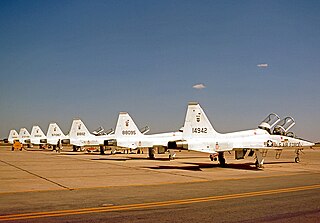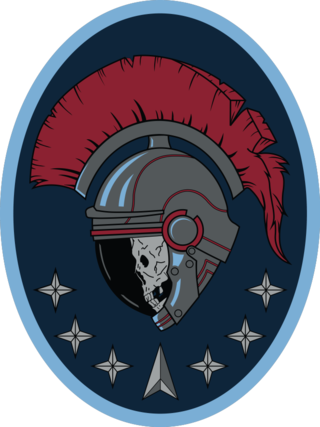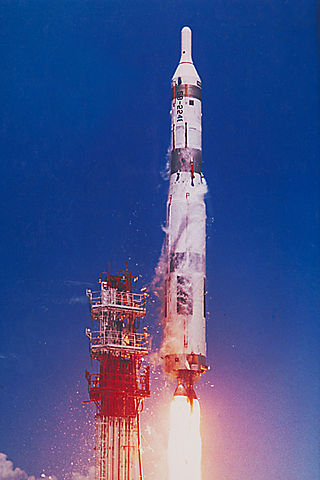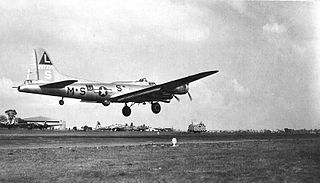
The 337th Test and Evaluation Squadron is a squadron of the United States Air Force. It is a part of the 53d Test and Evaluation Group of the 53d Wing. The 337th is stationed at Dyess Air Force Base, Texas, though it operates out of a number of bases throughout the United States.

The United States Air Force's 9th Combat Operations Squadron is an Air Force Reserve Command space operations unit located at Vandenberg Space Force Base, California. The 9th augments the 614th Air and Space Operations Center in operating the Joint Space Operations Center, performing combat operations, plans, strategy and intelligence assessments that enable the Commander, Joint Functional Component Command for Space to command and control space forces by providing worldwide space effects and theater support to combatant commanders.

The 350th Air Refueling Squadron is a United States Air Force unit assigned to the 22nd Air Refueling Wing at McConnell Air Force Base, Kansas. It operates Boeing KC-135 Stratotanker aircraft conducting air refueling missions.

The 560th Flying Training Squadron is part of the 12th Flying Training Wing of the United States Air Force based at Randolph Air Force Base, Texas. It operates the Northrop T-38 Talon.

The 562nd Flying Training Squadron is an inactive United States Air Force unit. It was part of the 12th Flying Training Wing at Randolph Air Force Base, Texas, where it operated the Boeing T-43 Bobcat conducting navigator training from 1993 until inactivating on 19 November 2010.

The 509th Missile Squadron is an inactive United States Air Force unit. It was last assigned to the 351st Operations Group at Whiteman Air Force Base, Missouri. The squadron was equipped with the LGM-30F Minuteman II Intercontinental ballistic missile with a mission of nuclear deterrence. With the end of the Cold War, the 509th was inactivated on 28 July 1995.

The 532d Training Squadron is a United States Air Force unit, assigned to the 82nd Training Group at Vandenberg Space Force Base, California. The squadron was first activated in 1942 as the 532d Bombardment Squadron. After training in the United States, it moved to England and engaged in strategic bombing campaign against Germany with Boeing B-17 Flying Fortress bombers. In the European Theater of Operations, it earned two Distinguished Unit Citations. It returned to the United States after the war and was inactivated. The squadron was activated briefly in the reserves from 1947-1949, but was not fully manned or equipped.

The 533rd Training Squadron is a United States Space Force unit. It is assigned to the Space Training and Readiness Command, California, where it trains Space Force personnel on space systems. It was activated in this role in 1994.

The 569th Strategic Missile Squadron is an inactive United States Air Force unit. It was last assigned to the 9th Strategic Aerospace Wing at Mountain Home Air Force Base, Idaho. It was equipped with the first-generation SM-68 Titan I intercontinental ballistic missile, with a mission of nuclear deterrence. The squadron was inactivated as part of the phaseout of the Titan I ICBM on 25 June 1965.

The 545th Bombardment Squadron is an inactive United States Air Force unit. It was last assigned to the 384th Bombardment Wing at Little Rock Air Force Base, Arkansas, where it was inactivated on 1 September 1964.

The 546th Bombardment Squadron is an inactive United States Air Force unit. It was last assigned to the 384th Bombardment Wing at Little Rock Air Force Base, Arkansas, where it was inactivated on 1 September 1964.

The 547th Bombardment Squadron is an inactive United States Air Force unit. It was first activated during World War II as a Boeing B-17 Flying Fortress unit. After training in the United States, it deployed to the European Theater of Operations, where it participated in the strategic bombing campaign against Germany, earning two Distinguished Unit Citations. Following V-E Day, the squadron moved to France and was inactivated there in early 1946.

The 339th Bombardment Squadron is an inactive United States Air Force unit. It was last assigned to the 96th Bombardment Wing at Dyess Air Force Base, Texas, where it was inactivated on 15 March 1963.

The 511th Bombardment Squadron is an inactive United States Air Force unit. It was last assigned to the 351st Bombardment Group at Fairfax Field, Kansas, where it was inactivated on 27 June 1949.

The 451st Flying Training Squadron is an active United States Air Force unit. It is assigned to the 479th Flying Training Group, stationed at Naval Air Station Pensacola, Florida. The squadron was first activated as the 451st Bombardment Squadron in July 1942. After training in the United States, it deployed to the European Theater of Operations (ETO) in December 1942. It engaged in combat operations from 1943 to 1945, earning a Distinguished Unit Citation for demonstrating the effectiveness of medium bombers in the ETO. Following V-E Day, it participated in the disarmament of the Luftwaffe until September 1945, when it returned to the United States for inactivation.

The 738th Expeditionary Airlift Squadron is a provisional United States Air Force unit. It is assigned to Air Combat Command (ACC) to activate or inactivate as needed. It operates Lockheed C-130 Hercules aircraft in theater airlift missions as part of the Global War on Terrorism. Its current status and duty location is undetermined.

The 381st Bombardment Squadron is an inactive United States Air Force unit. It was last assigned to the 310th Bombardment Wing at Schilling Air Force Base, Kansas, where it was inactivated on 25 March 1965.

The 788th Tactical Fighter Squadron is an inactive United States Air Force unit. During World War II, as the 788th Bombardment Squadron, it was assigned to the 467th Bombardment Group as a Consolidated B-24 Liberator squadron in 1943. After training in the United States, it moved to the European Theater of Operations the following year. It saw combat until the surrender of Germany in May 1945, earning a French Croix de Guerre with Palm for its actions contributing to the liberation of France. From May to August 1944, the squadron was detached to the 801st Bombardment Group (Provisional) engaging in Operation Carpetbagger operations. After V-E Day, the squadron returned to the United States and transitioned into the Boeing B-29 Superfortress It was inactivated on 4 August 1946 at Clovis Army Air Field, New Mexico.

The 535th Bombardment Squadron is an inactive United States Air Force unit. During World War II, the squadron engaged in combat in the European Theater of Operations, earning two Distinguished Unit Citations. It returned to the United States and was inactivated at Sioux Falls Army Air Field, South Dakota after V-E Day, but was active in the reserve from 1947 to 1949, although it is not clear whether it was fully equipped or manned.

Space Delta 1 is a United States Space Force unit responsible for space training. It runs the Space Force's basic military training, weapons school, and other advanced training courses and exercises. It was established on 23 August 2021 following the establishment of the Space Training and Readiness Command, the field command to which it reports. It is headquartered at Vandenberg Space Force Base, California.

























